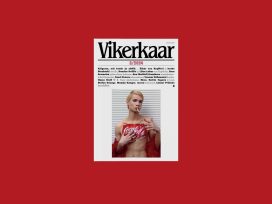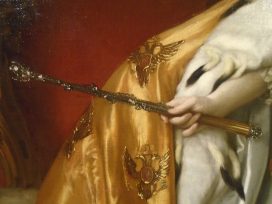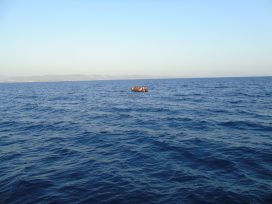Rector Magnifice!
Ladies and Gentlemen!
I am honoured to speak here today at Turku University. I would like to dedicate my talk to a dear friend of mine, a graduate of Turku, the late Juhan Kristjan Talve, with whom over the years I had some of the most stimulating discussions on democracy, Estonia, and national identity.
Juhan’s life, like that of so many Estonians, exhibited the personal effects of the odd turns of our history, and how out of these turns one becomes a complex amalgam of identities: born in Sweden, with a Finnish mother and Estonian father who had been a soldier in the Finnish Army and was later a professor of ethnography here at Turku University. Juhan Kristjan Talve grew up here in Turku, a Swedish and Estonian citizen who wrote in Finnish about all kinds of topics: legal, political and philosophical. But first and foremost, he wrote about Estonia and the fate of Estonians – most importantly in his book Viro ja Venäja, about Estonian identity under Soviet rule. It was a book so disliked by the Soviet authorities that the KGB formed a special taskforce under the aegis of the Estonian Soviet Socialist Republic’s Academy of Sciences to determine who the pseudonymous author of the book was, so as to give it, in Soviet parlance, a worthy counterblow.
So what better place than Turku for an Estonian to talk about identity – who we feel ourselves to be, what is important in defining ourselves, how others define us, and how and according to which criteria we define those who we believe to be different from us.
I believe that these are core questions we need to ask ourselves if we wish the European Project to work; these are core questions we need to answer in order to make the European Project a reality that we believe in, the way you believe the existence of Finland to be a fundamental reality, the way a German or an Irishman or a Greek or a Pole or an Estonian sees himself or herself to be Finnish, German, Greek, Polish or Estonian. We should view ourselves as Europeans.
The answers are not obvious. I recall already a quarter a century ago a survey done among young people in Germany, where I was living at the time, that showed that a very large percentage of people considered themselves not German but European. Similar results have been obtained in other EU member states over the years. We can understand that after WWII, being German and proud of your country was difficult and that this led to a hypertrophy of pan-national feeling. Serbian policies under Slobodan Milosovic made national identification even more suspect. We can perhaps understand why national feeling or national identification was disapproved of. The rather pompous, self-satisfied and patronizing dismissal by some in the 1990s, which equated national identification with “ancient tribal hatreds” (if it touched upon identities other than one’s own of course), is also understandable if we look at the context and the need for self-validation by those who said such things.
Curiously, national feeling is to be frowned upon as long as it is restricted to small nations. When we see jingoism and genuinely aggressive nationalism in large nations, we are told we must understand and take it into account.
Less onerously, a number of thinkers on national identity have made the case that national identities are social constructions. Ernst Gellner, Karl Deutsch, Elie Kedouri and Benedict Anderson, as different as their views on the sources of national identity are, all start from the point that there is nothing natural about national identity. In other words, that national identity is created, it is a useful fiction we construct for political, economic or simply social or literary purposes.
Nonetheless, constructed or not, national identity seems to be a constant in human nature, at least in modern Europe. Indeed, I would argue that one feature that separates pre-modern, perhaps pre-Enlightenment but certainly pre-Industrial Europe from today is that we do place such importance on national rather than civic or regional identity – on our mother tongue and what we call our national culture. This is another way of saying that we have a national identity. It is very difficult for us to change this.
Not that this is impossible. Indeed, we can, and sometimes do change our national identities as individuals, when we say emigrate to a new homeland, or in the odd case, we do so in situ, as the Soviets wanted Estonians, Latvians and Lithuanians to do for fifty odd years, although few did. Or in Poland in the nineteenth century, as exemplified by the famous sign in the railway station in Poland when it was under Russian Rule: “Smoking and speaking Polish is forbidden”.
Yet while individual identity is something difficult to change, I would argue that the way nations are viewed, as well as their cultural and political identification, is far more malleable – and indeed arbitrary.
Three quarters of a century ago, in discussions among the Great Powers regarding this part of the world, it was customary to speak of four Baltic Countries. After all, the aftermath of WWI and the collapse of nineteenth-century empires saw the emergence of a raft of “new countries” – Yugoslavia, Austria and Hungary in their present form, Czechoslovakia, Poland. And here, on the eastern littoral of the Baltic Sea, four Baltic countries: Lithuania, Latvia, Estonia, and Finland. Although no one speaks this way today, it is useful to read the diplomatic and foreign policy discussions of the 1920s and 1930s to get an understanding of how this region was seen in the rest of the world. Today, however, we speak of three Baltic countries. For in the brutal drawing of dividing lines in WWII, Finland fell on the better side and the rest of us on the miserable side of the line for a very long time. Although one should not forget that even in the infamous Molotov-Ribbentrop or Hitler-Stalin Pact, Finland was ceded to the Soviet Union together with Estonia, Latvia and Lithuania.
Even this classification of Baltic countries is strictly a twentieth-century phenomenon that did not exist prior to statehood. Indeed, culturally and historically before independence they shared little other than small size and belonging to the Russian empire. Lutheran Estonians with a history of 700 years of German feudal rule speaking a West Finnic language had little to do with Catholic Lithuania, with its own long history as a Grand Duchy and shared statehood with Poland.
Today, the three countries are viewed all too often as a single state, but let’s face it we share much: independence gained, lost and regained at the same time; mass deportations by the Soviets carried out multiple times, always on the same day. Politically, in the past two decades, we have worked for the same goal: to join the European Union and Nato. And while we have tried at different times very different approaches to our eastern neighbour, we do not seem to be able to find a modus vivendi that would both satisfy our neighbour and our own desire to determine our own destinies democratically.
This threesome, however, need not remain final as a way of looking at this part of Europe. Just as throughout the nearly thousand year-long written history of the region, Finland, Estonia, Latvia, Lithuania have all experienced multiple identities, and membership in several, often different empires, so too it is possible to forge new identities. Indeed, I would argue that we should be looking to create identities that go beyond those that history and others have foisted upon us.
Today we can discern or imagine several competing or even co-existing concepts and theories regarding our region. The traditional view (if I can use that term for something with such a short history) distinguishes between the Nordic and Baltic countries, a distinction that itself is barely 70 years old. Another sees Balto-scandia as single space, as I would argue it was before the arrival of imperial rule from East and West. We have a northern dimension in the European Union and we will see under the Swedish presidency in the second half of this year a Baltic Sea Strategy that will recognize the Baltic Sea littoral as what it fundamentally and by and large is: an EU lake, a mare nostrum.
The very term mare nostrum (“our sea”), which describes the Roman view of the Mediterranean as a lake of Roman imperial dominion, shows how transitory our regional mental geography can be. Today, discussions of Northern Africa as a home of European civilisation would strike us as odd. Yet what would European civilisation be without St Augustine’s De Civitate Dei? St Augustine was born and lived and did his seminal work in what today is Algeria. Yet today, in the European Union, we have something called the Barcelona Process, which is supposed to bring Northern Africa – the Southern Littoral of the Roman’s mare nostrum – closer to the European Union. But also not too much closer, for today, the region is considered to be non-European. Yet St Augustine of Hippo lies at the core of what we consider Europe to be.
So, too, during the Cold War mental geography underwent a dramatic shift. In his classic essay from the early 1980s, “The Idea of Central Europe”, Milan Kundera expressed his exasperation that in the post-war era, Vienna was considered a bastion and reigning capital of western civilisation, while Prague, the home of Franz Kafka and long-time home of Wolfgang Amadeus Mozart, two hundred kilometres to the West of Vienna, had quickly become a symbol of the grey and listless totalitarian East. Just as happened to Estonia, to Poland, to Hungary, countries once a part of European civilisation that found themselves in a matter of just a few years, thrust into an altogether different civilisation, as so brilliantly described by Nobel prize-winner Czeslaw Milosz in his book The Captive Mind.
Finland itself has shown how identity can change and how one can change one’s identity. Until 200 years ago Finland was a province of Sweden, like Norway. As a Grand Duchy within the Russian Empire, it acquired a completely different identity, not only among Finns but also in the way it was viewed by others. Norway achieved independence from Sweden in 1905 but, based on Norwegians’ linguistic and cultural closeness and affinity to Swedes, came to be called a Scandinavian Country. Finland, becoming independent in 1917, temporarily became a member of one community imagined by others, a Baltic country, and then worked to become what was clearly a new imagined community, a Nordic country, a categorisation created to bypass the linguistic commonalities expressed these days mostly by the joint state ownership of the airline SAS.
I think that the careful listener can discern where I am leading. National identity at the personal or individual level is a construction that is difficult to change but is nonetheless a social construct that we cling to like it or not. Yet cultural or civilisational identity is far more easily changed – be it Augustine’s Carthage or Kundera’s Prague – and indeed within our own region has changed multiple times even within the last century. Or to put it differently: almost nothing will change you from identifying yourself as a Finn or a Swede or an Estonian unless you make tremendous efforts to renounce your mother tongue, your education and your heritage, something few people in history have done. Yet there is very little to prevent us, other than lethargy or lack of imagination, from coming up with a more coherent identity than the outmoded and rather short-lived ones of the twentieth century.
Certainly many of us want to see a more coherent European identity, a positive European identity, one not based on the rejection of our national identity but one that is comfortably pan-national and firmly rooted in the shared Enlightenment values of Europe: democracy, rule of law, respect for human rights. As it stands, however, as much as these Enlightenment values do underlie the European Union, and also, sadly, divide us from and set us apart from much of the rest of our continent, these do not seem to have the power to unite us in identity. Nor will Europe be united by common antagonism, be it Habermas and Derrida’s anti- Americanism or the eurosceptics dislike of the Acquis communautaire. We don’t build unity out of opposition.
But closer to home, in our own region, despite the long, drawn-out hang-over of living under or next to an aggressive totalitarian regime throughout much of the twentieth century, we are ever more aware of the commonalities that this part of the world share. Of course, we have our differences. Of course we can always find these differences and point out why Estonians are different from Finns who are different from Swedes who are different from Danes. Yes, all this is true, all this is possible and will remain true, for who would want to give up what makes us different? Looking for how we differ is after all part of what defining ourselves is about. If we did not look for those differences, we would not feel our identity.
As a minor digression I would add here that while we all are experts at how we are not like someone else, we move to dangerous ground when we start making decisions on who does or does not belong to some other nationality. Take me, for example. I speak English with an American accent. I was educated in the US. For some people outside Estonia, this makes me an American. But by that same logic, someone not familiar with Finland could say Mannerheim was a Russian. After all, he too spent a long time outside Finland and indeed was educated and made a career in Russia. I don’t think anyone making such a claim would be taken seriously in Finland. End of digression.
But when it comes to the larger issue of Europe, let us not at the same time fall victim to what Sigmund Freud called the “narcissism of small differences”, with the result that within the EU, where we are all small and decidedly viewed as a group or at the minimum, a Wittgensteinian cluster concept, we fail to realise our goals for a lack of co-ordinated action.
Yet if we realise that we can maintain our national identities and at the same time create new realities, new more encompassing identities, we can perhaps move on in the twenty-first century to do far more than we realise at present.
Here in Turku, you have one example of what is possible: the late professor emeritus, Ilmar Talve, the father of my late friend Juhan Kristjan. Ilmar Talve was an Estonian, who completed his Ph.D. at Stockholm University, and as a professor at Turku University was a leading expert on Finnish national culture. Yet throughout he was also a major Estonian novelist and literary critic. All that in spite of the divisions of the Cold War. Think of how much more he and others could have done to integrate and understand our cultures in the absence of those awful fifty years of division imposed upon all of us.
So this would be my plea, here in Turku or Abo: let us think more deeply about how to create a new identity for this region. One that is not mired in externally imposed geopolitical divisions of the last century, which no one liked when they existed and which indeed ceased to exist a full generation ago, when many of you listening today had just been born. My call to you is to be liberated of those old, bygone categories, to think anew and afresh. You are the ones to create a new identity of this region. Be it Balto-Scandia or mare nostrum or whatever you think we all could be. Be creative, think differently, and more importantly, act on your ideas.
Thank you!
Address given in Turku University, Finland, 22 April 2009






